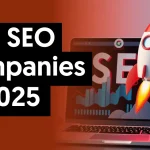For decades, we’ve been running our world on a “take-make-waste” model. We extract resources, transform them into products, and then, well, we toss them. It’s a straight line from the mine to the landfill. And honestly, it’s a system that’s hitting its limits.
But what if waste wasn’t waste? What if it was just food for the next cycle? That’s the heart of the circular economy—a regenerative system designed to eliminate waste and keep materials in use for as long as possible. And for businesses, this isn’t just a nice-to-have green initiative. It’s a profound shift towards resilience, innovation, and, you know, long-term survival.
Let’s dive into the sustainable business models that are making the circular economy a tangible, profitable reality.
From Line to Loop: The Core Philosophy
Think of the traditional linear model like a river flowing in one direction. It just… ends. The circular model, in contrast, is more like a natural ecosystem—a forest. In a forest, a fallen tree decomposes and nourishes the soil, which then supports new growth. Nothing is truly lost. The goal for a business is to mimic that closed-loop system.
This means designing products from the very beginning with their entire lifecycle in mind. It’s about asking questions like: How can this be easily repaired? What happens to its components at the end of its life? Can we take it back and make something new from it? The answers to these questions birth powerful new ways of operating.
Five Game-Changing Circular Business Models
1. The Circular Supply Chain Model
Here’s the deal: instead of relying on virgin, often scarce resources, companies use renewable, recycled, or bio-based materials. This model closes the loop at the very beginning of the production process.
Real-World Example: Interface, the modular carpet company, famously transformed its supply chain. They source discarded fishing nets from coastal communities to create new carpet yarn. They’re not just reducing ocean plastic; they’re creating a more resilient and ethical supply chain. It’s a win-win-win.
2. Resource Recovery & Upcycling
This is where one company’s trash becomes another’s treasure. Or even the same company’s treasure! It’s about recapturing value from waste streams, transforming by-products or end-of-life goods into new, higher-value materials.
Real-World Example: The fashion industry is notoriously wasteful. But companies like Patagonia, with their Worn Wear program, are changing the script. They repair, resell, and recycle their own garments. A worn-out jacket isn’t garbage; it’s a raw material for a new product or a cherished item for a new customer. They’re building a brand around durability and stories, not just seasonal trends.
3. The Product-as-a-Service (PaaS) Model
What if you sold the use of a product, not the product itself? This is a radical shift. In a PaaS model, customers pay for access, performance, or a lease. The company retains ownership of the physical asset.
Why does this work for circularity? Well, it completely aligns the company’s incentives with product longevity and efficiency. If a product breaks down, it costs the company—not the customer—to fix it. So, they are financially motivated to design things that last, are easy to repair, and can be refurbished.
Real-World Example: Philips offers “Lighting-as-a-Service” to commercial clients. Instead of a company buying thousands of lightbulbs, they pay Philips for the light they use. Philips installs, maintains, and upgrades the energy-efficient LED fixtures. At the end of their life, Philips takes them back to harvest the materials. The client gets predictable costs and better service; Philips gets a continuous revenue stream and its materials back. Brilliant.
4. Product Life-Extension Models
This model is all about keeping products and components in use for longer. It directly challenges the culture of planned obsolescence. How? Through repair, refurbishment, remanufacturing, and resale.
Real-World Example: The tech giant, Apple, has (after some pressure, sure) expanded its self-service repair program and independent repair provider network. But even more compelling are companies like Fairphone, which designs modular smartphones. You can easily replace the camera, battery, or screen yourself, dramatically extending the phone’s life and reducing e-waste.
5. Sharing Platforms
This model maximizes the utilization of products by facilitating shared access. Think about it: a power drill sits idle in your closet for 99% of its life. A sharing platform connects people who need a drill for an hour with people who have one to spare.
This reduces the total number of products that need to be manufactured in the first place. It’s a model built on access over ownership.
Real-World Example: Platforms like Peerby or local tool libraries are perfect examples. They allow communities to share everything from lawnmowers to party tents. It saves people money, builds community connections, and lightens the overall material footprint of a neighborhood.
Making the Shift: It’s Not Always Easy
Transitioning to a circular model is a journey, not a flip you can switch. Companies face real hurdles. Upfront costs for new technology can be high. Supply chains need to be completely rethought. And, perhaps the trickiest part, consumer behavior needs to be nudged away from “owning the latest” and towards “valuing long-term service.”
That said, the business case is becoming undeniable. The potential for cost savings on raw materials is massive. It builds incredible brand loyalty and trust. And it future-proofs a business against resource scarcity and volatile commodity prices.
A Glimpse at the Circular Future
So, where is this all heading? The most forward-thinking companies are blending these models. A car company might use a circular supply chain (recycled aluminum), offer a subscription service (PaaS), and then remanufacture the vehicle’s components at the end of its lease (life-extension). The loop gets tighter and more efficient.
| Linear Model Mindset | Circular Model Mindset |
| Sell more units, faster. | Build a long-term relationship with a customer. |
| Waste is a cost to be disposed of. | Waste is a design flaw and a potential resource. |
| Value is in the one-time sale. | Value is in the ongoing service and performance. |
The circular economy is more than a strategy. It’s a different way of seeing the world. It asks us to see the inherent value in everything we create, long after its first use. It’s a move from being mere consumers to being temporary custodians of the materials that flow through our lives.
And for a business, that’s not just sustainable. It’s simply smarter.


 Sustainable Business Models for Circular Economies: It’s Not Just Recycling, It’s Rethinking Everything
Sustainable Business Models for Circular Economies: It’s Not Just Recycling, It’s Rethinking Everything  Voice Search Optimization for Service-Based Businesses: Finding Your Voice in a Hands-Free World
Voice Search Optimization for Service-Based Businesses: Finding Your Voice in a Hands-Free World  Tax Optimization Strategies for Digital Nomads: Keep More of Your Hard-Earned Money
Tax Optimization Strategies for Digital Nomads: Keep More of Your Hard-Earned Money  Financial Management for Creator Economy Professionals: Beyond the Next Paycheck
Financial Management for Creator Economy Professionals: Beyond the Next Paycheck  Trade Show Logistics for International Exhibitors: Your Blueprint for a Seamless Show
Trade Show Logistics for International Exhibitors: Your Blueprint for a Seamless Show  Neurodiversity Inclusion in Workplace Leadership: Why It’s Your Next Competitive Edge
Neurodiversity Inclusion in Workplace Leadership: Why It’s Your Next Competitive Edge  Regenerative Leadership: The Unbeatable Engine for Organizational Resilience
Regenerative Leadership: The Unbeatable Engine for Organizational Resilience  Marketing Automation for Creator-Led Brands: Reclaim Your Time and Scale Your Passion
Marketing Automation for Creator-Led Brands: Reclaim Your Time and Scale Your Passion 

